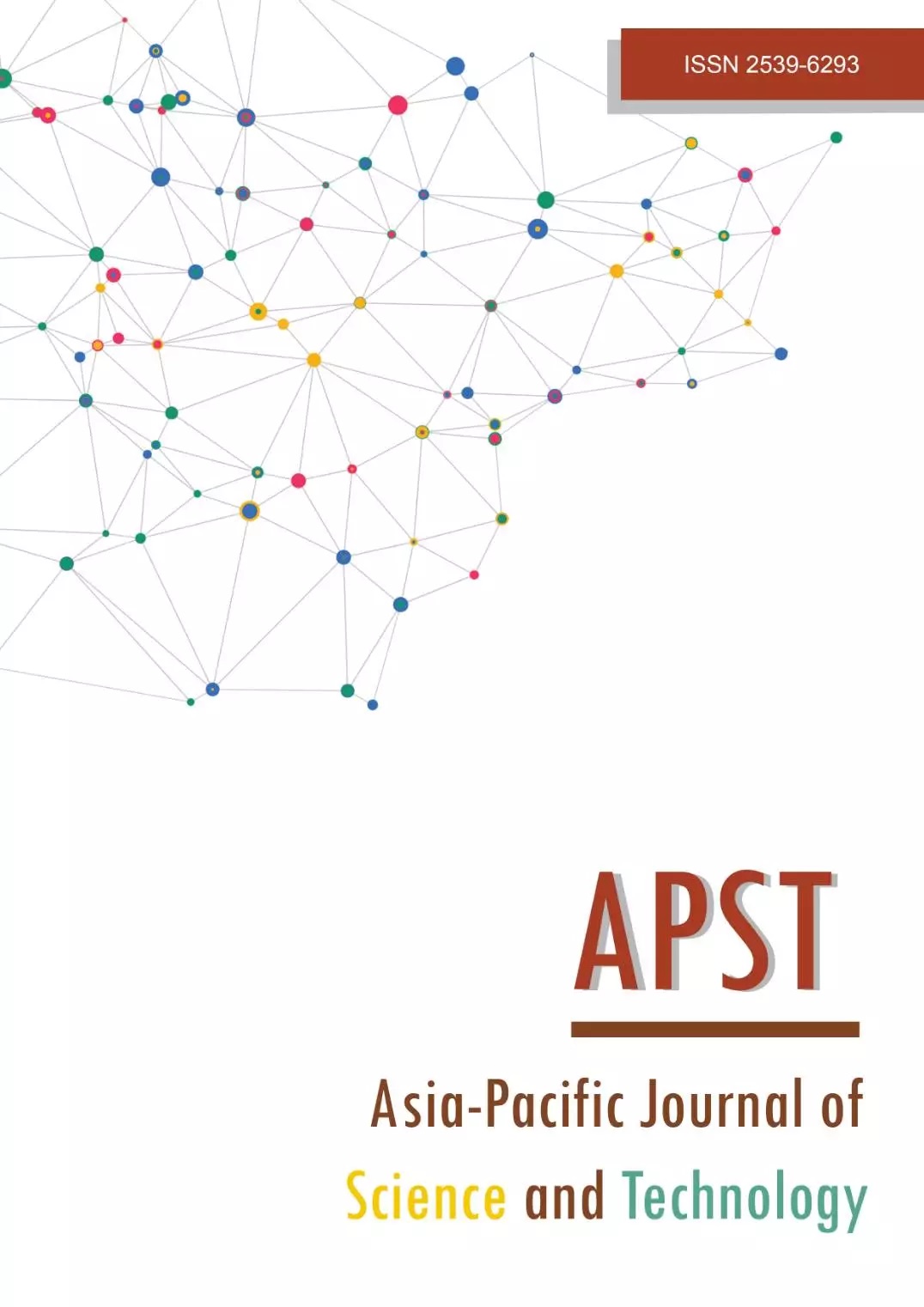Seed quality and seed health of field pea cultivars as influenced by storage containers
Main Article Content
Abstract
An experiment was conducted to assess the influence of storage containers on seed quality and seed health of field pea (Pisum sativum L.). The study comprised of three cultivars viz., BARI Motor-1, BARI Motor-3 and BADC Motor-1 and three containers viz., plastic container, polybag, earthen pot and two durations viz., before storage in container and after 90 days storage. The results revealed that among the three cultivars BARI Motor-1 seeds recorded lowest moisture content (10.97%), lowest electrical conductivity (164.1µS/cm/g), maximum germination (72.67%), vigor index (2926.81), shoot length (24.93 cm), root length (13.95 cm) and minimum incidence of seed borne fungi. Before storage, the seed showed lowest moisture content (9.29%), 1000-seed weight (79.53 g), electrical conductivity (100.9 µS/cm/g), highest germination percentage (91.67%), vigor index (4464.87), shoot length (26.79 cm), root length (21.85 cm) and minimum incidence of fungi Aspergillus flavus (1.81%), Fusarium oxysporum (5.76%), Rhizopus spp. (0.27%), Colletotrichum spp. (5.55%) and Aspergillus niger (0.11). Among the three containers, plastic container noticed lowest moisture content (10.06 %), electrical conductivity (174.5 µS/cm/g), maximum germination percentage (73.22%), vigor index (3086.32) and minimum incidence of fungi Aspergillus flavus (2.872%), Fusarium oxusporum (7.358%), Rhizopus spp. (1.278%), Colletotrichum spp. (6.228%) and Aspergillus niger (0.750%). Thus, it can be concluded that the quality and health of field pea seed decreased with increase in period and plastic container was suitable for field pea seed preservation. Stored seeds had low germination, high moisture content and incidence of seed borne pathogen than before storage.
Article Details

This work is licensed under a Creative Commons Attribution-NonCommercial-NoDerivatives 4.0 International License.
References
Giordano LB. Cultivation of pea (Pisum sativum L.). 3rd ed. Brasília: Embrapa Hortalicas (CNPH); 1997.
Fikere M. Bing DJ, Tadele T, Amsalu A. Comparison of biometrical methods to describe yield stability in field pea (Pisum sativum L.) under South Eastern Ethiopian conditions. Afr J Agric Res. 2014;9:2574-2583.
Nascimento WM, Freitas RA, Gomes EML, Soares AS. Methodology for the accelerated aging test in pea seeds. Hortic Bras. 2007;25(2):205-209.
McPhee K. Dry pea production and breeding - A mini-review. J Food Agric Environ. 2003;1(1):64-69.
Bastianelli D, Grosjean F, Peyronnet C, Duparque M, Regnier JM. Feeding value of pea (Pisum sativum L.) 1. Chemical composition of different categories of pea. Anim Sci. 1998;67(3):609-619.
Statistical Year Book of Bangladesh. Statistics Division, Ministry of Planning, Govt. Peoples Republic of Bangladesh. Dhaka: BBS; 2015.
Statistical Year Book of Bangladesh. Statistics Division, Ministry of Planning, Govt. Peoples Republic of Bangladesh. Dhaka: BBS; 2021.
Huda MN. Why quality seed? Reality & vision Bangladesh context. B-GSDP. 2001;158-191.
Ali MO, Talukder AHMMR, Nahar L. Effect of seed rate and walkway on yield of field pea under relay cropping with T. aman rice. Bangladesh Agron J. 2018;21:95-103.
Muhammad N, Islam MM, Reza MR, Talukder MAI, Forid MS, Islam ATMS. Assessment of seed quality of pea (Pisum sativum L.) influenced by different storage containers at different storage periods. Int J Agron Agri Res. 2016;9:148-157.
Chidananda KP, Vellaichamy C, Jayas D, Alagusundaram K, White NDG, Fields PG. Respiration of pulses stored under different storage conditions. J Stored Prod Res. 2014;59:42-47.
Carvalho NM, Nakagawa J. Sementes: Ciência tecnologia e produção. 4th Edition, Fundação Cargill, Campinas, Jaboticabal: FUNEP. 2000;588.
Hamim I, Mohanto DC, Sarker MA, Ali MA. Effect of seed borne pathogens on germination of some vegetable seeds. J Phytopathol Pest Manag. 2014;1:34-51.
Finch-Savage WE, Bassel GW. Seed vigour and crop establishment: extending performance beyond adaptation. J Exp Bot. 2016;67:567-591.
Fakir GA, Hossain I, Parmanik BK. Research findings of BAU on seed borne diseases of pulses. Proc Natl Wrkshp seed Pathol, Bangladesh Agric Univ. 2001;1–10.
Doijode SD. Seed storage of horticultural crops. New York: Food Products Press; 2001. p. 339.
Heydecker W. The vigor of seeds-a review. Proc ISTA. 1979;34:201-209.
International Seed Testing Association International rules for seed testing. Switzerland: ISTA; 1999.
International Seed Testing Association International rules for seed testing. Switzerland: ISTA; 2003.
Baki AA, Anderson JD. Physiological and biological deterioration of seeds. In: Kozlowski TT, editor. Seed biology. 2nd ed. New York: Academic Press; 1972. p. 283-315.
Vieira RD, Krzyzanowski FC. Electrical conductivity test. In: Krzyzanowskifc FC, Vieria RD, Neto FJB, editors. Seed vigor: concepts and tests. London: Abrates Ltd.; 1999. p. 1-26.
Nath R, Mathur SB, Neergaard P. Seed borne fungi of Mungbean (Phaseolus aureus Roxb.) from India and their significance. Proc ISTA. 1970;35:225-241.
Nowsher AZM, Khan A, Islam S. Colletotrichum lindemuthianum of dolichos lablab from Bangladesh. Bangladesh J Bot. 1975;4:121-123.
Neergaard P. Seed pathology. 1st ed. London: MacMillan Press Ltd.; 1979.
Babarinde G, Fabunmi OA. Effects of packaging materials and storage temperature on quality of fresh okra (Abelmoschus esculentus) fruit. Agricultura Tropica Et Subtropica 2009;42(4):151-156.
Islam MZ. Effect of seed treatment with Mehagoni seed and Neem extract on the prevalence of seed borne pathogens of okra [dissertation]. Mymensingh: Department of Plant Pathology, Bangladesh Agricultural University; 2006.
Anam MK, Fakir GA, Khalequzzaman KM, Hoque MM, Rahim A. Effect of seed treatment on the incidence of seed-borne diseases of okra. Plant Pathol J. 2002;1:1-3.
Agrawal PK. Relative storability of seeds of ten species under ambient conditions. Seed Res. 1980;8:94-99.
Nabila SM, Amin AKMR, Islam MO, Haque MN, Achakzai AKK. Effect of storage containers on the quality of wheat seed at ambient storage condition. Am-Eurasian J Agric Environ Sci. 2016;16(2):402-409.
Singh KK, Dadlani M. Effect of packaging on vigour and viability of soybean [Glycine max (L.) Merrill] seed during ambient storage. Seed Res. 2003;31:27-32.
Roberts EH. Storage environment and the control of viability. In: Roberts EH, editor. Viability of seeds. Dordrecht: Springer; 1972. p. 14-58.
Halim MA, Hossain MM, Haque MM, Solaiman ARM. Seed quality of onion as influenced by maturity stage. Seed Technol J. 2012;3:9-12.
Haque HMA, Hossain I, Rahman MA. Effect of different storage containers used for storing seeds and management practices on seed quality and seed health in CVL-1 Variety. Int J Plant Pathol. 2014;5(2):28-53.

